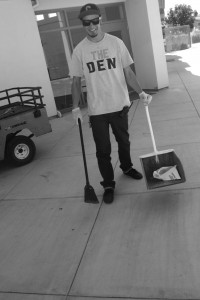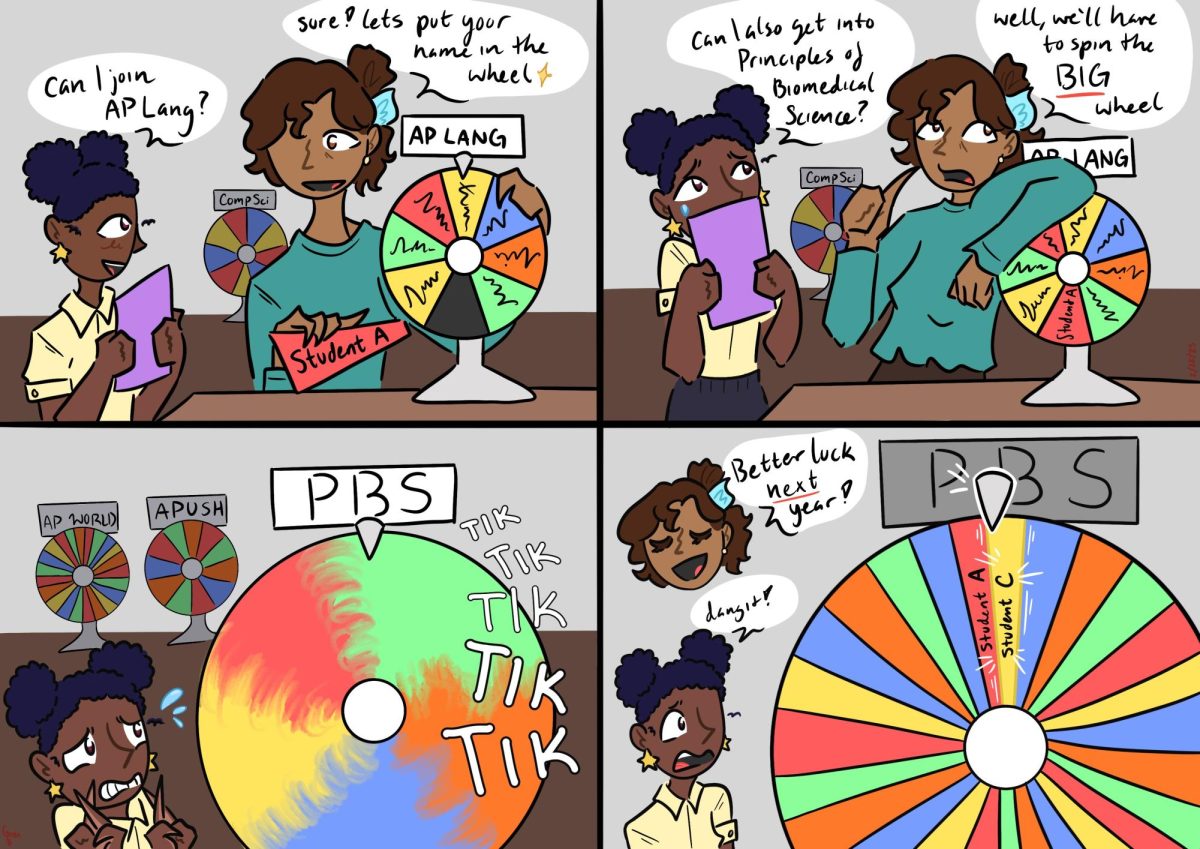 There are 11 men who tend to the thousands of Cal High students and the waste of their daily habits. These men are the custodians.
There are 11 men who tend to the thousands of Cal High students and the waste of their daily habits. These men are the custodians.
It is pitiful to see the student body litter the campus every single day without thinking twice, or about how it affects these men.
The custodians linger in the shadows of our everyday lives. And just as we spend out teenage livelihood in classrooms, they spend theirs cleaning up our messes.
Much can be done to help these everyday heroes out, from a simple flush of the toilet to moving no more than 10 feet to throw away trash.
In the past few years, the amount of littering at school has grown out of control. Students are to blame for this.
The responsibility of keeping the campus clean is given to the people who attend it every day. Yes, the numerous grey garbage cans around campus do serve a purpose.
“Students are careless about putting trash where it belongs during lunchtime,” said custodian Mauricio Rodriguez.
Many of the custodians seem to think students haven’t been taught to walk over to a waste bin and throw their trash away in their own households.
Custodian Virgil Rodriguez hopes to give students some advice. “If we have discipline in the smallest things in life, you’ll have no problems.”
Many students at Cal seem to lack the discipline to throw their trash away.
The custodians are also under the impression that students act very immature for their age.
“They’re young adults, they should act like it,” custodian Ken Noble said.
Photography teacher Paul Fortayon has worked at Cal for 14 years, witnessing student littering problem.
“It is really frustrating to note that students see that other people would pick their trash. It really reflects of your character,” said Fortayon, noting that his 3-year-old son knows where trash belongs. “The custodians job is to empty out the garbage can, not to pick it up.”
There has been an active campaign to get students to clean up. Lunch detentions require students to help clean the campus during the final 10 minutes of lunch and into fifth or sixth periods. There have also been posters around school promoting a cleaner campus.
“In the past few years, they made signs, but that’s not enough, in classes they should have discussions about trash,” Rodriguez added.
The dirtiest parts of school include the quad after lunch, and the flowerbeds. Students throw trash into the flowers, although waste bins are right next to them.
There is some mindset that throwing food at other students is entertaining.
“There is only one person to clean the school regularly, but after a food fight, you need about five people,” said head custodian Roberto Manrique.
Students are not only inconveniencing the custodians, but it costs the school around $250 to cleanup up a food fight.
Chewing gum is also a huge culprit in the battle against cleanliness. Every summer, all the custodians have to come together and remove gum everywhere on campus. By the end of the “gum-hunting,” what is left is a monstrous ball of chewing gum, laced together with dried spittle and industrial preservatives.
“If you want to chew gum, you should know where to put it,” Noble said.
When also asked if he cares about a dirty campus, senior Jimmy Nguyen preferred a clean school.
“I see them (the custodians) going up and down floors, and cleaning up the bathrooms and school, and they look like they do a lot of work, and I really do respect that,” said Nguyen.
The custodians have seen things from a perspective with which many students have not.
“In the Philippines, where I lived, we don’t have this kind of school, but the kids (of Cal) have it now, and they trash it,” Raquipiso said. “You got such a nice school, and you guys destroy it.”


